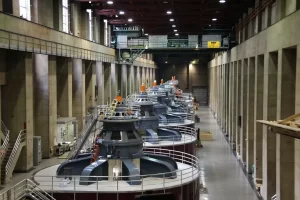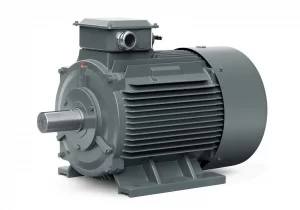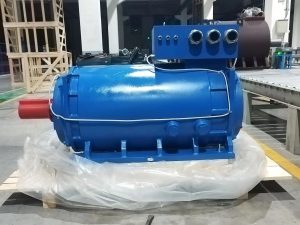
As economies grow and populations expand, the energy demand is also rising globally. This demand requires substantial amounts of electricity, pushing technology and infrastructure forward. Indications are that industries will be redesigned for sustainability, and the transition away from conventional energy sources toward efficient, renewable energy systems is going to be a primary component of all such changes. Permanent Magnets in generators are one of the novel solutions and are multi-faceted with advantages regarding efficiency and reliability. Permanent Magnet Generators are a key piece of the transition puzzle to better energy sources which work by utilizing physical properties of the Permanent Magnets that aid performance.
Permanent Magnet Generators are servomotor-like machines where the Permanent Magnets create an inherent magnetic field to generate electricity. However, instead of conventional generators that generate electromagnetic coils, PMGs use Permanent Magnets for their magnetic field. This difference allows the generator to be much simpler and more reliable. This makes PMGs especially beneficial for applications where volume/weight efficiency is essential, such as wind and hydroelectric power systems. The growing penetration of PMGs in wide sectors substantiates their important role in the energy matrix scenarios.
Permanent Magnet Generators work on the principle of electromagnetic induction, where electrical energy is generated from mechanical energy. The permanent magnet rotor creates the rotating magnetic field as it turns around. The rotation of the rotor creates an AC current in face stator windings located around the rotor. This is mainly due to the presence of strong fields on Permanent Magnets with generators operating at low rotating speeds. It is ultimately this very feature that makes PMGs a natural fit for renewable energy, where variable speeds are the norm.
In addition, the direct drive of PMG with no excitation windings leads to lossless energy that is part of winding loss due to classical generators and thus enhances the efficiency. They also are designed with simplicity in mind, which simplifies maintenance procedures and leads to less downtime and lower operational costs. Therefore, using Permanent Magnets in generators can help optimize the total efficiency and promote sustainability along with renewable energy usage.
Permanent Magnet Generators feature a structural design comprising multiple integral components that are critical to their functional efficiency. The rotor is the heart of the PMG and it consists of Permanent Magnets placed to create a uniform magnetic field. The stator encloses the rotor and contains winding coils that collect the electricity that has been induced(through rotation of the rotor). With a simple configuration, it enables a lightweight construction that requires less information and unnecessary space extension as compared to conventional energetic generators.
Furthermore, as PMGs usually have additional functions such as higher cooling systems or enclosures for outdoor working environments, they provide endurance and reliability. It performs even better since only small losses due to heat and mechanical stress are possible with selected materials for construction. All in all, the use of Permanent Magnets over the decades has proven to be one of the breakthroughs in energy generation technologies. As such, Prosumer Micro Grids are well positioned to economically and effectively meet future energy demands — especially in light of the increasing societal push for sustainable solutions. As this sector keeps on advancing, further research and development will surely enable Permanent Magnets to boost the performance of generators in different applications.
Induction generators are extensively employed as main components in renewable power generation systems, such as wind and hydroelectric power generation4. With these types of generators, and also like those that operate through the principle of electromagnetic induction, most are in a way some kind of electro-mechanical device that converts mechanical energy to electrical energy. Thanks to clever design, however, induction generators do not need a separate excitation system – as the rotor spins it creates its own magnetic field. This removes the secondary energy losses found in traditional power generation systems.
Permanent Magnets in induction generators are a great improvement in both cost-effectiveness and operational capability. With the integration of Permanent Magnets, these machines have better performance characteristics in variable speed applications where power output must be as constant as possible. Permanent Magnet Induction Generators have a simplified structure which provides low maintenance and operational costs, these features are extremely important in wind and hydroelectric plants where reliability and uptime are of utmost importance.
In addition to this, Permanent Magnet Induction Generators provide efficiency at all loading conditions which makes them specifically adaptable for energy generation. Such generators are increasingly being adopted by industries where sustainable energy solutions play a key role, facilitating the global transition to clean and renewable sources of energy. These generators are increasingly being adopted across several industries where sustainable energy solutions are critical, contributing towards cleaner and renewables global energy transition.

An induction generator works on the principle of electromagnetic theory based on EMF (Electromotive force) which is based on relative motion between rotor and stator. Above synchronous speed, driving a rotor essentially makes it a generator feeding energy back onto the electrical grid. Permanent Magnets can strengthen this process; due to their native permanent magnetic field, they can be coupled efficiently with stator windings, hence gagging the high force of forward emf.
Such operational efficiency gives rise to many advantages, including less mechanical wear due to fewer frictional components being used. Thanks to its one-of-a-kind approach, it can quickly generate energy in response to mechanical input — a key capability for places where winds and water speeds are inconsistent. Permanent Magnets also mean no external excitation source is necessary, which further smooths the operational demands placed on the system — in turn, enhances durability and reduces downtime.
In addition, the requirement for high energy density materials e.g. neodymium in Permanent Magnets enables compact designs without the penalty of loss of power. This translates to much lighter generators that can be installed in areas where traditional generators would simply not be feasible. In summary, the functional mechanism of induction generators has improved considerably with the presence of Permanent Magnets, enabling strong energy-generating potential for potent applications.
Permanent magnets also present several design advantages over rare-earth elements that lead to greater performance overall. First of all, a significant advantage is the high efficiency of PMGs. Permanent magnet generators, due to the lack of excitation losses characteristic of traditional generators operate at almost the full mechanical energy input into electrical power. Such efficiency is especially beneficial when energy conservation becomes a big factor due to the huge prices that come with production and transmission.
Moreover, the small size of PMGs makes them a key consideration for space-saving applications in recent decades. This absence of size means they can be integrated more directly into existing systems, whether in offshore wind turbines or localized hydro-power setups. The sturdiness of Permanent Magnets against the environment personalities makes these generators more reliable for clean energy options as it increases their operational life, apart from just depending on size.
Ease of maintenance: A good way to look at the benefits of PMGs is how easy they are to maintain. Removal of electrical windings means a simpler design, and consequently fewer components requiring regular inspection and maintenance. Not only does this simplicity result in lower maintenance costs, but it also lowers the risk of unplanned breakdowns that can stop energy production. In addition, innovations in material science for the new generation of Permanent Magnets are making them even more capable of resisting physical and environmental challenges.
Finally, the Permanent Magnet Generators are extremely flexible and can work over a large range of speeds and loads. This capability is essential in industries where energy requirements vary widely, allowing PMGs to manage within a wide operational envelope. With the industry shifting towards sustainable practices of energy production, and Permanent Magnet technology advantages becoming more apparent it has been noted these generators will continue to be used in future developments of energy generation.

Qingdao Enneng Motor Co., Ltd stands out as a pioneering force in the development of advanced motor technology, specializing in the interaction of permanent magnets with generator systems. Their commitment to innovation has positioned them as significant contributors to the evolution of generator efficiency and reliability. By incorporating cutting-edge designs and high-performance materials, they have successfully created generators that harness the full potential of permanent magnets. Their research and development efforts emphasize the importance of integrating practical solutions with sophisticated engineering to meet the demands of various industries, particularly in renewable energy sectors. As the market for sustainable energy sources continues to grow, companies like Qingdao Enneng Motor Co., Ltd are key players in driving technological advancements that leverage the benefits of permanent magnets.